
6 stages of the product development process: from ideation to launch

Organizations need to innovate to stay relevant and beat the competition. This can be done by developing creative, well-researched, and extensively tested products and services. New digital product development requires a careful, strategic approach.
You want the design of your product to be well-received by your customers and the user experience to be positive. This is true whether your organization is making a physical or digital product such as a website, app, or software solution.
To develop popular and profitable new products, organizations must intelligently plan their new product design process. This process can be broken down into six stages: ideation, research, planning, prototyping, testing, and product launching after feedback and iterations.
New digital product development and why it matters
Product development involves bringing a new product from an idea to a finished item on the marketplace. The right design strategies keep organizations competitive and innovative in a world where markets and consumer preferences change quickly. This requires original thought, careful preparation, and precise execution.
Using the six stages of product development below can enable your organization to create a viable and marketable product. This process prepares you to develop products that have sufficient demand, work out the kinks early with product testing and re-testing, and get insights into the minds of your customers so you can give them exactly what they want.
A careful product development and design strategy may also help to reduce overall risks, increase sales, and improve team collaboration.
6 stages of the product development process
Different industries may differ slightly in their approach to product design and development, but generally speaking, there are six essential stages to designing a good product. Each step is important to making a finished product that is both functional and marketable. Be sure to include the following procedural steps in your strategy from idea to launch.
1. Discovery and idea generation
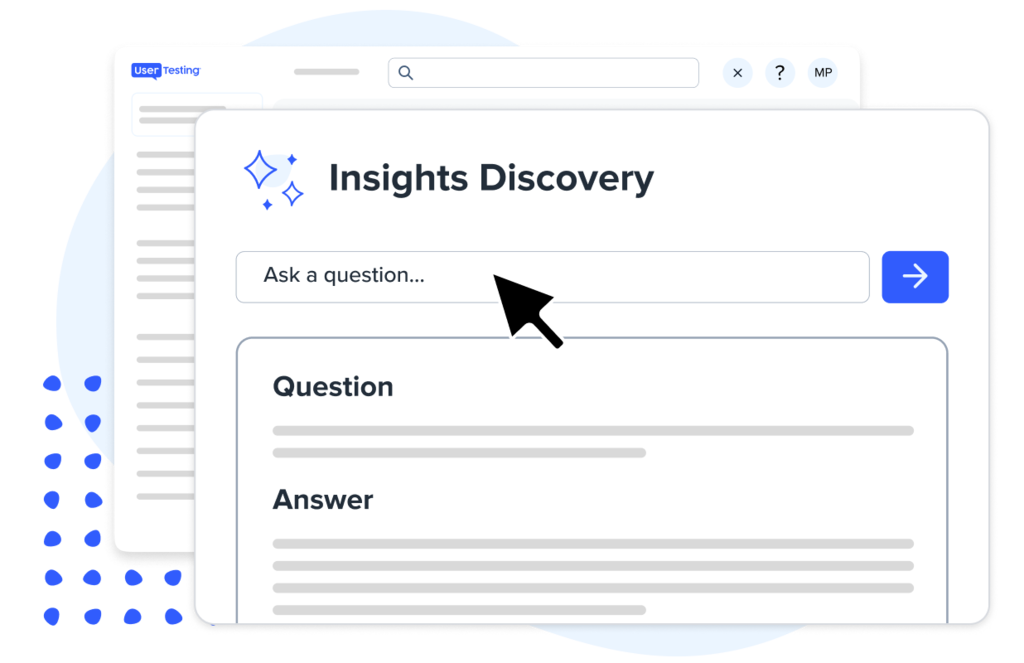
The first part of the process involves discovery, in which designers and product teams explore new combinations of existing elements and product ideas. During the discovery phase, brainstorming and mind mapping are popular techniques for stimulating creative thinking, identifying problems, and visually organizing ideas around a central theme.
The key discovery objective is to define and prioritize user pain points and develop the project's initial scope. The following techniques can help teams discover new ideas:
- Competitive research
- User research
- Customer feedback
- Trend analysis
- Pain-point analysis
- Product reviews analysis
After the discovery phase, your teams will go deeper into idea generation based on the problems they've identified and the frameworks they've established. Ideation is the creative process of generating, communicating, and developing new products—or innovations on existing products.
Idea generation may involve creating one winning concept right out the gate or investigating a broad range of options first. Creativity usually involves arranging existing things in new ways to make innovative designs.
Finding the right connections can take some time and effort, but there are some idea-generation techniques your teams can use to make it easier. More straightforward techniques, such as brainstorming sessions and mind mapping, involve visually organizing ideas around a central theme.
There are also more formal approaches, including the SCAMPER method. This method works off existing ideas and makes changes, substitutions, and improvements.
The SCAMPER method involves the following main actions:
- Substitute: Making changes or substitutions to make a new improvement
- Combine: Combining two or more elements to make a new product or service
- Adapt: Adding new elements or functions or adapting to changes in the market or user base
- Modify: Modifications can include making changes in shape, size, and color
- Purpose: Considering what existing elements can be put to a different use
- Eliminate: Removing, simplifying, or minimizing certain elements
- Reverse engineer or rearrange: Rearranging the product or the product’s production process to cut costs or increase efficiency
Other idea-generation methods include SWOT analyses, for which your team comes together to discuss a product’s strengths, weaknesses, opportunities, and threats. Or, you can experiment with storyboards to think about new and creative product ideas.
2. Market and competitor research

Market research involves getting the information you need to make informed product design decisions. Researching your market and competitors can help you validate your product's viability by ensuring a product-market fit. You will achieve a good fit for your product when your product’s value proposition, user experience, and feature set connect with the underserved needs of your target audience.
Research can enlighten you on perceptions of consumer demands, industry trends, and competitor products. You can then use this information to influence design choices, ensuring the final product meets a market need convincingly. This is your value proposition.
Your research approach will depend on the size of your organization. For instance, newer startups may look at a smaller, more targeted audience than larger companies that are more entrenched in their markets.
You should do exploratory research to find a problem that needs a solution. Then, you can learn more about what current solutions exist and who is looking for them. Continue to monitor market trends as you develop your product to see if any changes need to adapt to market conditions and customer sentiments.
Competitor analyses are also essential to developing new products. Stay on top of competitor behavior and modify your strategies, if necessary. There are no successful companies that have neglected to research their competitors. For instance, YouTube's CEO, Susan Wojcicki, has mentioned the importance of tracking what Facebook's video platform provides to stay competitive.
Conducting competitor research involves:
- Identifying and analyzing your direct and indirect competitors
- Observing what kinds of products they’re introducing and what kinds of products are successful
- Review customer reviews or ask target audiences directly to spot other products’ strengths and weaknesses and understand customers’ pain points.
- Analyzing your competitors’ strengths and weaknesses in terms of product quality, customer service, pricing, and brand reputation
After doing competitor research, you may be able to identify a market need for a new product that your competitors are not developing, improve upon a competitor’s product, or compete for market share by offering better customer service or a more high-quality product.
UserTesting makes competitor research easy by helping you:
- Learn who your competitors are
- Explore the customer experiences of your competitors
- Test what works and what doesn't on your competitor's app or product
- Build the competitiveness of your product about similar offerings on the market
- Use competitor comparison templates to make competitor research quicker and easier
3. Planning
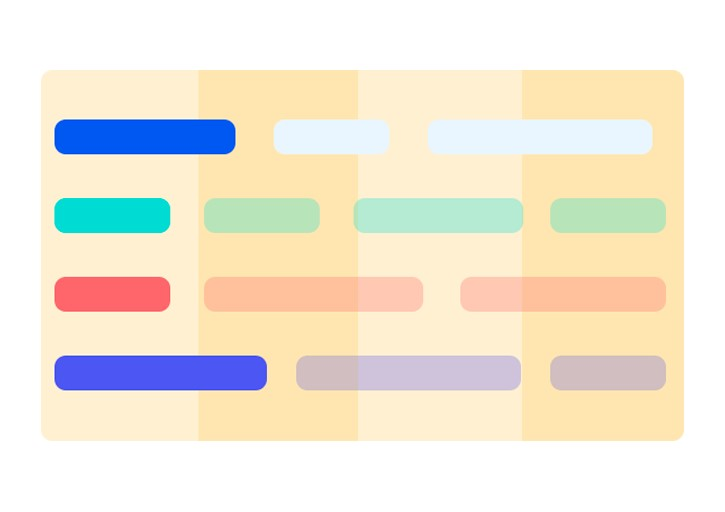
Your ideas start to take shape during the planning phase. This entails transforming concepts into concrete design plans. Planning involves in-depth outlining your product's features, requirements, and specifications based on user needs. If you don’t start your planning with your end user in mind, you risk low product engagement and extra time needed for product testing and iterations.
Once you have an idea for a product, you can think about the resources, time, and staff you’ll need to develop your prototype and final product. If your product is digital, which parts will be developed in-house, and which parts will be outsourced? Where and how will you fabricate the prototype if it is a physical product?
The next part of the plan should be figuring out how you will do your product testing. Testing with real people and following through with iterations after feedback ensures a human-centric design.
Plan on doing several rounds of testing—and even more, if the product is complex or a novel idea that hasn’t been validated on the market yet.
You should also plan your marketing. Develop your marketing strategy by setting a budget, making press kits, and creating or outsourcing your advertising. You can advertise in various ways, including social media posts and paid search ads. Whichever methods you outline in your plan should align with what you know about your audience and where they look for products.
The planning phase continues after the product launch as you seek feedback and engage with your customers and users. Update your plans after tracking the performance of your product and analyzing data such as sales revenue, market share, conversion rate, return on investment, and other key performance indicators.
4. Prototyping
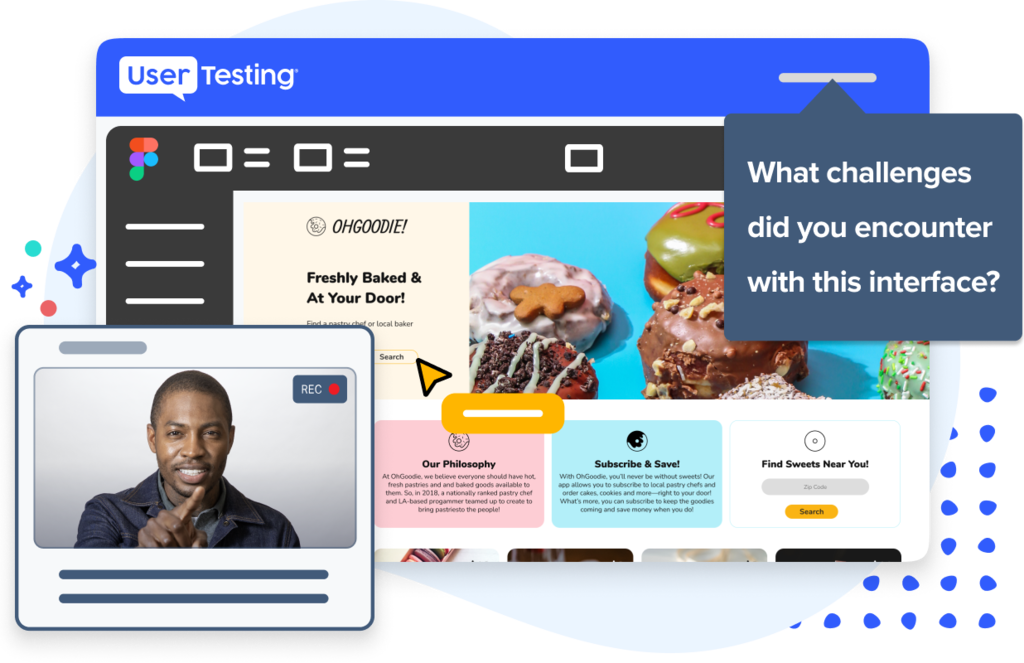
Prototyping is essential to verifying the product's functionality and design. A prototype allows you to assess the product's viability and usability before launching into full-scale production or implementation. This step may involve different kinds of prototypes, including low-fidelity and high-fidelity versions of your product.
Low-fidelity prototypes are similar to rough sketches of your design and involve less time and resources. If you’re making a physical product, you can create a low-fidelity prototype with simple materials like paper, cardboard, or plastic to get a rough example of the product is vision.
A low-fidelity digital product prototype can have a wireframe, which is a digital blueprint of what a site or app may look like. Wireframing includes layouts, content hierarchies, and user flows.
High-fidelity prototypes, however, are more polished versions of what the finished product will look like. A high-fidelity prototype will have the look and feel of the end product. For example, if you’re developing a website, its high-fidelity prototype will have all the finished website's images, videos, and functionality.
Users can interact with the high-fidelity prototype just as they would with the finished product. These prototypes can be valuable when doing user testing to get feedback and insights, which help you during the final iterations and finishing touches.
The following are just a few tools to make digital prototypes:
- Figma: User experience (UX) designers and developers can use this solution to collaborate on wireframing and prototyping.
- Adobe XD: With this program, you can use vector graphics to make your prototype design.
- Webflow: This platform can help you design your website, build your high-fidelity prototype, and launch the site.
- Axure RP: This is a wireframing and prototyping platform in one package.
- Origami Studio: Originally for Facebook designers, Origami lets you design, prototype, and animate your apps and websites.
- Sketch: This platform makes it easy for UX designers to make prototypes without much of a learning curve.
5. Testing and validation
User testing with real people is essential in customer-centric product design, as it allows you to remove the guesswork and provide your customers with exactly what they want. Testing should happen throughout the product development process, including after each iteration, following feedback and testing results.
Testing and validation involve several key things:
- User testing: By giving real people access to your prototype, digital experience, and more, you receive user and consumer input on its easy of use and appeal. Usability testing, interviews, and surveys are a few examples of user testing methods. With the right user testing solution, you can see genuine responses and get valuable insights.
- Collecting feedback: By gathering and evaluating user input, you can get a deeper look into the customer experience and understand which functions work well and which don’t.
- Iterations after feedback: The process of designing a product is multi-stage, as you should improve the product after getting testing results and feedback. The product may go through multiple iterations before being finalized.
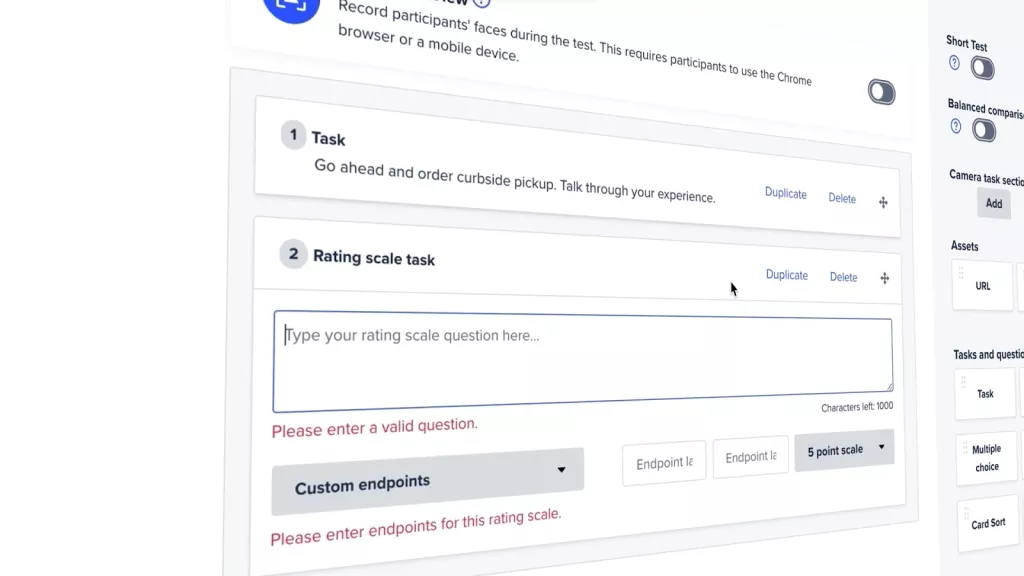
Some user testing metrics you’ll be looking for include:
- Effectiveness: How well can users successfully use the product?
- Task time: How long did users take to complete a task within your product? The acceptable task time will differ by product.
- Errors: Are users encountering any errors while using the prototypes?
- User satisfaction: How was the user experience during the testing? This includes how well-liked the product was, whether the users’ needs were met, and how engaged they were.
Validation involves re-testing your modified and improved product to see if the changes resonate with your users and address their pain points. If your users state that your product solves their problem and have no significant complaints or further suggestions for improvement, your product is ready to launch.
6. Product launch
The product launch is when you formally introduce it to the market. This complete process includes several components, such as distribution planning to ensure the product is accessible to the target audience via the most effective channels—for instance, online platforms, retail storefronts, or direct sales.
Essential components of the launch include the execution of your marketing strategies, which showcase your solution's distinctive features and benefits, resonate with the target audience, and generate a lasting effect in the marketplace. Digital marketing, social media campaigns, advertising, PR events, and influencer collaborations are all common approaches within marketing initiatives.
Industries differ, but these are the steps to a typical product launch:
- Finish the product design: After testing and iterating, finalize the design and build the finished product.
- Develop a marketing plan: Plan on getting the word out about the product launch with advertising, influencer campaigns, social media posts, and other digital marketing methods.
- Make a launch plan: Plan how to bring the product to market.
- Write a sales and distribution strategy: This step includes deciding which channels to sell the product and sales team training.
- Manage the inventory: If you produce a physical product, have it manufactured and warehoused.
- Devise a pre-launch plan: Develop a detailed timeline for the launch. Plan where any events will take place and who will attend these events. If the events are public, set a time and date and advertise them.
- Hold the launch event: Hold a publicized event with live product demonstrations.
- Distribute your product: Get your new product on shelves or digital stores, or make the digital product live.
Common challenges during product development
There are difficulties you may need help with designing new products. Learn about them in advance so you can minimize their impact if they do occur.
Communication breakdowns
When designers, developers, and product managers don’t communicate effectively, the product may suffer from inconsistent vision and execution. Failing to consider market trends and competing products can result in an obsolete solution before it even hits the market.
That’s why you should establish good communication protocols and hold regular meetings where all team members can exchange updates, issues, and comments. This ensures everyone is aligned with the project's goals and vision.
Lack of support for the product design team
Lack of support for the product design team can be a significant issue. They may need more adequate resources, financing, limited access to critical tools or technology, and a lack of clear guidance or knowledge from top management. The design team may fulfill the product's vision with sufficient assistance, resulting in improved results, postponed time frames, and increased team member frustration. A lack of support can also impede creativity and innovation by forcing the team to work under restrictive limits or with inadequate equipment.
Companies should acknowledge the importance of their design teams and consult them on what they need regarding resources and support. This comprises physical tools, training, research capacities, time for creative activities, and sufficient budgeting. Management should understand the design process and its requirements, providing clear goals and feedback while giving designers autonomy and freedom in their work. Companies may greatly increase the quality and originality of their efforts by investing in and supporting their design teams.
Not understanding user needs
It would be a mistake to omit user research during product design. Interviews can help get into the minds of your customers and better understand their needs, what they like about the product, and what they don’t like. Watching them use your product may help you catch design flaws and see areas that need improvement. Gathering this data type is difficult, if not impossible, in the drawing room.
The solution to not understanding user needs is to do user testing. User testing can involve the following:
- Questionnaires and surveys: Surveys can help you acquire user comments and preferences.
- Interviews: Conduct one-on-one interviews with potential users to gain a thorough understanding of their needs, preferences, and experiences.
- Usability testing: This kind of testing involves watching users interact with your product or prototype to find usability flaws and areas for improvement.
- Focus groups: In this type of testing, you gather a group of potential users to discuss their thoughts and feelings about the product.
- A/B testing: A/B testing compares two versions of your product to evaluate which performs better with users.
Integrate user insights into the product development process
Whether your organization is developing physical or digital products, following the six stages above, from idea generation to product launch, will help you streamline the process and optimize your creation. Knowing these stages can help you develop your strategies for designing an innovative product that is a good fit for your market and responds to the needs of your user base.
One of the most important steps to new product development is testing your product to get valuable insights and feedback about your product design. You can accomplish this with the help of UserTesting.
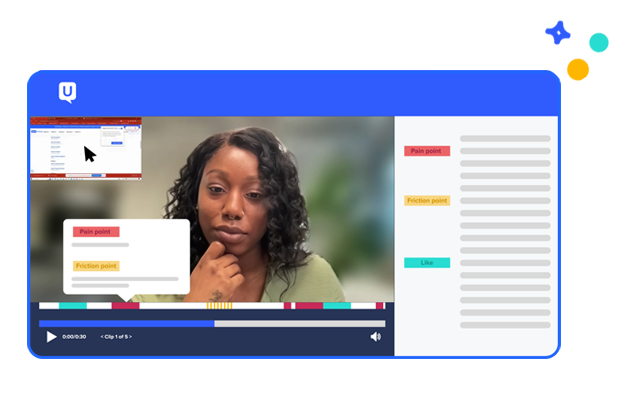
Get actionable insights today
Uncover human insights that make an impact. Book a meeting with our Sales team today to learn more.





